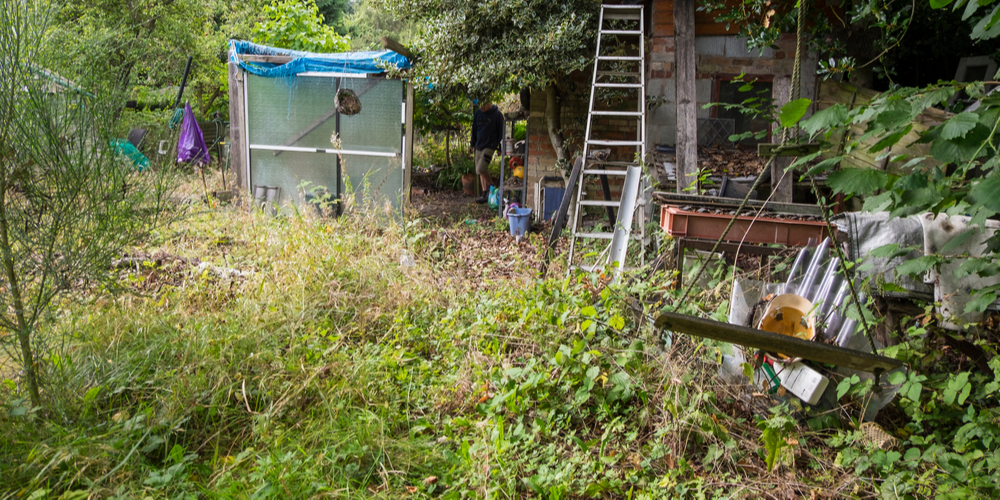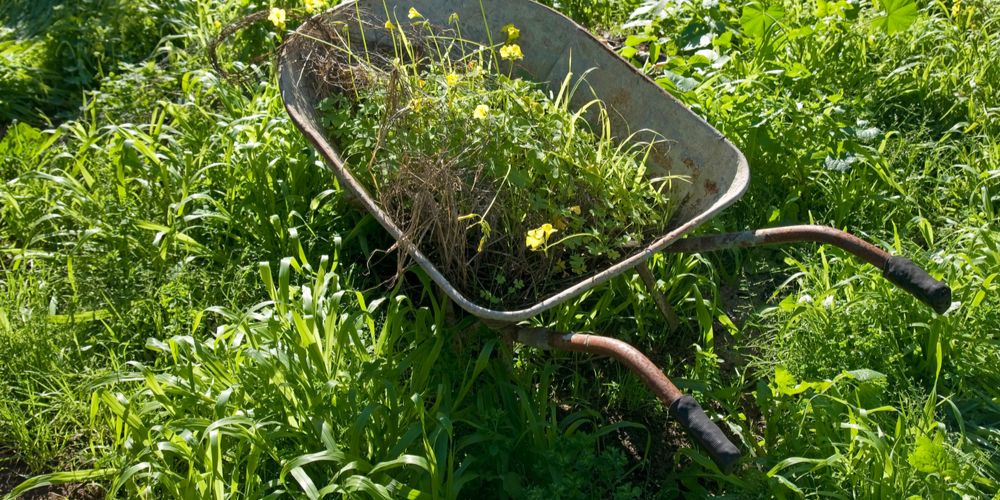Taking care of a garden requires effort from your side. And a lot of patience. But we have good news! Once you give your plants what they need to grow and allow them to establish themselves in your yard, watching them grow can be satisfying.
Of course, without proper maintenance, all of your efforts might be in vain. Instead of looking tidy and lush, your yard might look chaotic. And what you once carefully planned might (with time) become messy.

Weeds might take over, perennials multiply, and the edges of your garden will slowly blur.
Whether you just moved to a home with a neglected garden or need to raise the value of a property, here, you’ll find the information you need. After all, there is always a solution, even for jungly gardens. I
f you’d like to learn how to prepare an overgrown garden for planting, you are in the right place. Learn how to bring some peace to your yard and reclaim your yard in this essential guide!
Reclaiming an Overgrown Garden for Planting
Let’s be honest: working through an overgrown garden isn’t easy. Depending on how much time passed from the last maintenance, you might need a couple of hours of hard work or prepare yourself for a complete “makeover.”
Before getting started, assess how “bad” the situation is: if your garden only needs pruning and weeding here and there, you are in a good place. But if unwanted vegetation covers your yard, the approach you need to take might be different.
You’ll need to identify weeds from perennials, know which kind of soil you are working with, and plan an adequate landscape strategy that accounts for the amount of direct sunlight your plants could get.
Of course, the size of your garden affects how much time you’ll spend on it trying to get it back. Depending on how severe the “damage” is, you might need to use tools and weed control products (besides removing the undesirable greenery manually).
Preparing an Overgrown Garden for Planting
To begin with, you must understand that restoring a jungly garden will take time. You can start by clearing rubbish such as furniture, plastic, tools, or any junk you might find in the yard.
Then, continue by trimming the hedges and mowing the lawn: doing so will transform the look of your green overnight and push you to keep working. You can hire professionals to do the job if you don’t have the time to do it yourself.
Make sure you know which plants you should keep and which ones you should remove from your garden: you might be able to revive some perennials, climbers, and bushes!
Depending on how much time you want to invest in reclaiming your garden, you might have to use different tools and products. If you don’t have much time, consider applying suitable weed killers. Don’t forget to choose products that won’t harm the plants you want to keep!
After removing unwanted plants, consider applying the soil polarization technique: cover your areas with sheets of plastics and secure them with stones. The sun and the heat should kill seedlings that might still pop up, including seeds, insects, bacteria, and fungi.
Now it is time to prepare your garden for planting! Dig over the site you select and till the soil: it will improve its texture.
For best results, choose plants that do well in your region and soil condition, time of the year, and gardening skills.
Our Final Recommendations
It’s hard to give you a to-do list of things you should consider when preparing your overgrown garden for planting. After all, every case is different. But we can share with you our tips for a more effective job.
If you feel confident, consider using a weed burner: it will save you plenty of time and ensure you’ll get rid of everything you don’t need!
But try to use the season to your advantage: as you may expect, reclaiming your garden in the summer is much harden than doing so when the plant’s life slows down. We recommend you start with the process in the fall or early spring!
Also, you may want to leave a small “wild” section in your yard: it will attract bees, butterflies, and other beneficial insects and act as a “companion” to the rest of the plants you decide to add to your garden.
Related Article: How to Trim Overgrown Arborvitae
